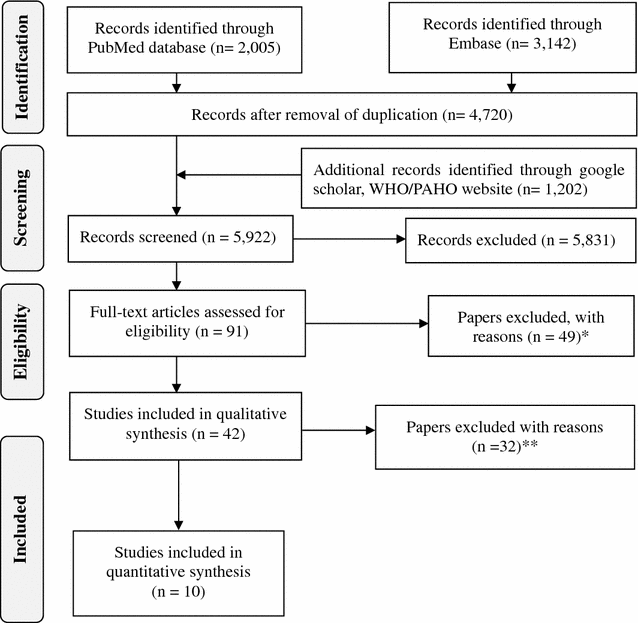What proportion of Salmonella Typhi cases are detected by blood culture? A systematic literature review
- PMID: 27188991
- PMCID: PMC4869319
- DOI: 10.1186/s12941-016-0147-z
What proportion of Salmonella Typhi cases are detected by blood culture? A systematic literature review
Abstract
Blood culture is often used in definitive diagnosis of typhoid fever while, bone marrow culture has a greater sensitivity and considered reference standard. The sensitivity of blood culture measured against bone marrow culture results in measurement bias because both tests are not fully sensitive. Here we propose a combination of the two cultures as a reference to define true positive S. Typhi cases. Based on a systematic literature review, we identified ten papers that had performed blood and bone marrow culture for S. Typhi in same subjects. We estimated the weighted mean of proportion of cases detected by culture measured against true S. Typhi positive cases using a random effects model. Of 529 true positive S. Typhi cases, 61 % (95 % CI 52-70 %) and 96 % (95 % CI 93-99 %) were detected by blood and bone marrow cultures respectively. Blood culture sensitivity was 66 % (95 % CI 56-75 %) when compared with bone marrow culture results. The use of blood culture sensitivity as a proxy measure to estimate the proportion of typhoid fever cases detected by blood culture is likely to be an underestimate. As blood culture sensitivity is used as a correction factor in estimating typhoid disease burden, epidemiologists and policy makers should account for the underestimation.
Figures


References
-
- WHO . Background document: the diagnosis, treatment and prevention of typhoid fever. Geneva: World Health Organization; 2003.
-
- WHO Typhoid vaccines: WHO position paper. Wkly Epidemiol Rec Health Sect Secr Leag Nations. 2008;83:49–59. - PubMed
Publication types
MeSH terms
LinkOut - more resources
Full Text Sources
Other Literature Sources
Research Materials

